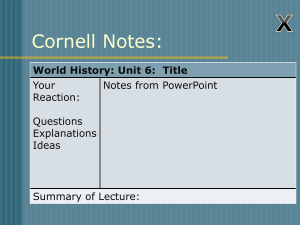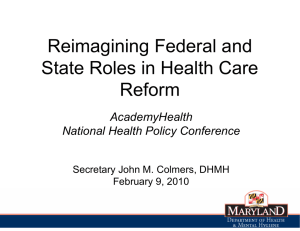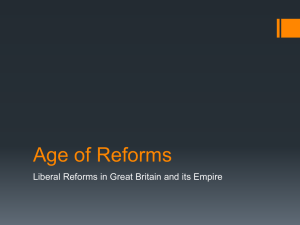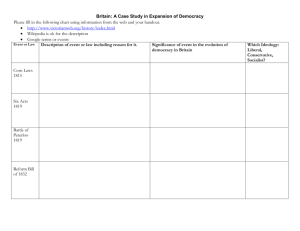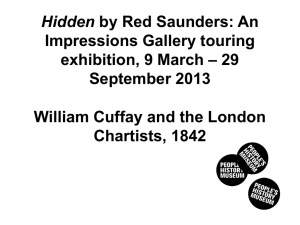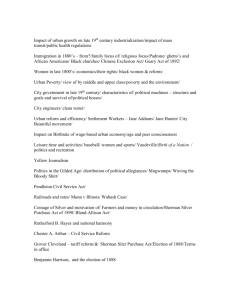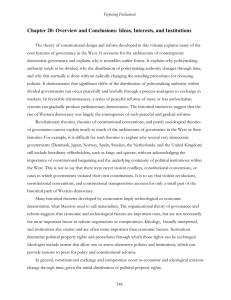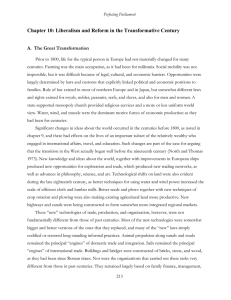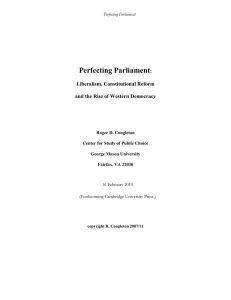Victorian Age of England 1837- 1901 Age of Liberalism, Socialism, Imperialism and Industrialization
advertisement
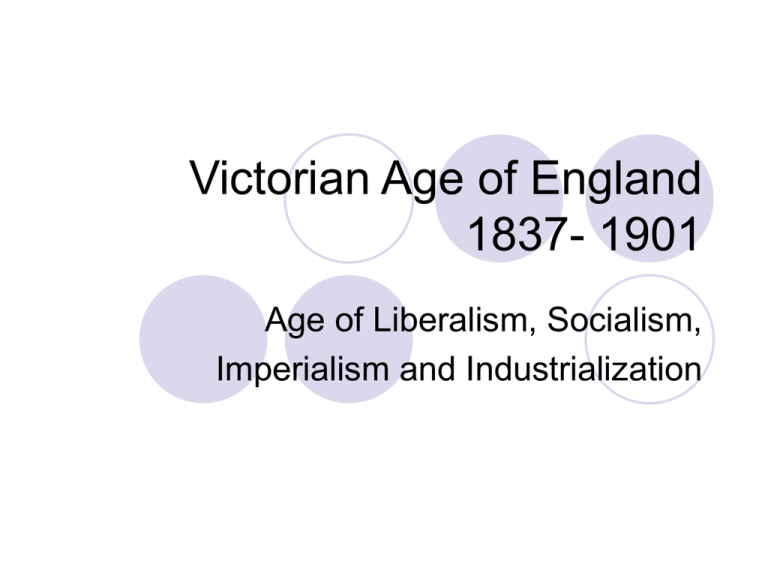
Victorian Age of England 1837- 1901 Age of Liberalism, Socialism, Imperialism and Industrialization House of Hanover 1760- 1820 George III 1820-1830 George IV 1830-1837 William IV 1837-1901 Victoria- one of the longest reigns. The “sun never set on the British Empire” Movement from Constitutional monarchy to true republic. Reasons for reforms- early 19th century Many laws to limit monarchical power but no written constitution Parliament developed over time MP’s sat for unspecified time- new elections only when called. Whigs----- to Liberal Party Tories----- to Conservative Party Whigs come to power Earl Grey- PM Corn Laws- tariffs on imported grain which benefits landowners keeps price of bread high Reform movement begins Reforms under Earl Grey Reform Bill -1832 No more “rotten boros” Reduced property requirements to vote Added representatives to Parliament for Ireland and Scotland These reforms not enough for liberals and socialists Chartist Movement- 1838-39 People’s Charter- liberal and socialist attempt to bring about reform- 1M signed it!! Demanded universal male suffrage Secret ballot Equal electoral district Annual elections Elimination of property requirement for MPs Role of Woman in Chartists Chartists-first political outlet for women organized rallies Created Chartist Sunday schools Organized boycotts Chartists rejected women’s issues to not alienate additional support-said working women emasculated men. Chartists lose support No support in Parliament for Chartists Movement ends around 1848 Repeal of Corn Laws- 1846- moves reforms to liberal political arena However, Chartists demands for reform fulfilled by end of 19th century –except for women’s suffrage Repeal of Corn Laws 1846 Middle class against landowners who were called “bread taxing oligarchy” Lowers price of bread Shift in power from house of Lords to House of Commons Eliminated tariffs on foreign food; “corn law” famines ; massive unemployment Industrial development Victorian Age height of British economic dominance England leading Europe in production Technology represented in Expo 1846 Crystal palace Disreali – Gladstone Rivalry Disreali- Conservative- pro empire- reform Gladstone- Liberal- Homerule for Irelandformation of Northern Ireland and Ulster split 1920’s Disraeli- Conservative First Jewish Prime Minister Continued reform acts Second Reform Bill- 1867- increased male suffrage by one million– criteria moves from owning property to paying taxes 1872- introduced secret ballot 1884- Universal Male suffrage 1885- equal electoral districts Disraeli - Conservative Creation of empire in India Purchase of Suez Canal from France Support scramble for Africa- Imperialism Cecil Rhodes- Rhodesia Attends Congress of Berlin 1880 Gladstone- Liberal Home rule Ireland Social Reforms 1828- Repeal Test Act New Poor Law- 1834- set up poor housesdid not solve poverty problem Child Labor Law 5 Day Work Week 10 Hour Work day Education Reforms 1832- money appropriated 1870- establish public education in all districts 1902 Subsidy money for both publis and Private institutions Attitude toward Criminals 1800- born criminal- severe punishment 1835- deplorable prisonsAttitude changes middle of century 1861- reform penal code Reduction of death penalty- not for pickpockets anymore Reduced whipping of women Reduced imprisonment for debt
